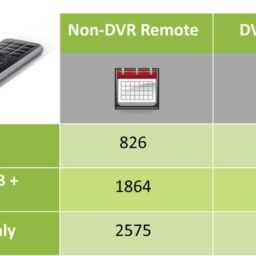Terms used to describe optical effects in faceted and non-faceted gems
Physical characteristics of colored stones are often described in terms of the way light travels through them, their unique visual effects, and the way they are cut. Here are a few terms you need to know:
Transparent. Light travels through the stone easily, with minimal distortion, enabling one to see through it easily.
Translucent. The stone transmits light but diffuses it, crating an effect like frosted glass. If you tried to read through such a stone, the print will be darkened and obscured.
Opaque. Transmits no light. You can not see through it even at a tin edge.
Special optical effects
Adularescence. A billowy, movable, colored cloud effect seen in some gemstones, such as moonstones; and internal, movable sheen.
Asterism. Used to describe the display of a star effect (four or six rayed) seen when a stone is cut in a non-faceted style. Star ruby, garnet, and sapphire.
Chatoyancy. The effect produced in some gemstones (when cut in a cabochon style) of a thin, bright line across the stone that usually moves as the stone is moved from side to side; sometimes called a cat’s eye effect.
Iridescence. A rainbow color effect produced by a thin film of air or liquid within the stone. Most iridescence seen in gemstones is the result of a crack breaking their surface. This detracts from the value, even if it looks pretty.
Luster. Usually refers to the surface of a gemstone and the degree to which it reflects light. Seen as the shine on the stone. Diamond, for example, has much greater luster than amethyst. Pearls are also evaluated for their luster, but pearls have a softer, silkier looking reflection than other gems. The luster in pearls is often called “orient.”
Play of color. Used frequently to describe the fire seen in opal.
Cut
Colored gems can be faceted or cut in the cabochon, or non-faceted, style. Generally speaking, the preference in the United States until recently was for faceted gems, so the finest material was usually faceted. However, this was not always the case in other eras and other countries; in Roman times, for example, it was considered vulgar to wear a faceted stone. Preference also varies with different cultures and religion and the world’s finest gems are cut in both styles. Don’t draw any conclusions about quality solely on style of cut.
Cabochon. A facet-less style of cutting that produces smooth rather than faceted surfaces. These cuts can be almost any shape. some are round with high domes; others look like square shape domes (the popular “sugar-loaf” cabochon); others are “buff-topped,” showing a some what flattened top.
Many people around the world prefer the quieter, often more mysterious personality of the cabochon. Some connoisseurs believe cabochons produce a richer color. Whatever the case, today we are seeing much more interest and appreciation for cabochons around the world, and more beautiful cabochons than have been seen in the market in many years.
Faceted. A style of cutting that consists of giving to the stone many small faces at varying angles to one another, as in various diamond cuts. The placement, angle, and shape of the faces, or facets, is carefully planned and executed to show the stone’s inherent beauty; fire, color, brilliance, to the fullest advantage. Today, there are many faceted styles, including “fantasy” cut which combine rounded surfaces with sculpted backs.
The importance of cut
Cutting and proportioning in colored stones are important for two main reasons:
They affect the depth of color seen in the stone.
They affect the liveliness projected by the stone.
Color and cutting are the most important criteria in determining the beauty of colored stone, after which carat weight must be factored in; the higher carat weight will usually increase the price per carat, generally in a nonlinear proportion. If a colored gemstone was a good quality material to begin with, a good cut will enhance its natural beauty to the fullest and allow it to exhibit its finest color and liveliness. If the same material is cut poorly, its natural beauty will be lessened, causing it to look dark, too light, or even “dead.”
Therefore, when you examine a colored stone that looks lively to your eye and has good color; not too dark and too pale, you can assume the cut is reasonably good. If the gemstone’s color is poor, or if it lacks liveliness, you must examine i for proper cut. If it has been cut properly, you can assume the basic material was poor. If the cut is poor, however, the material may be very good and can perhaps be re-cut again into a beautiful gem. In his case you may wan to confer with a knowledgeable cutter to see if it is worthwhile to re-cut, considering cutting costs and loss in weight.
Evaluating the cut of a colored gem
When examining the gemstone for proper cut, a few considerations should guide you:
Is the shade pleasing, and does the stone have life and brilliant?
If the answer is yes to both questions, then the basic material is probably good, and you must make a decision based on your personal preferences and budget.
Is the color too light or too dark?
If so, and the cut looks good, the basic uncut material was probably too light or too dark to begin with. Consider purchase only if you find the stone pleasing, and only if the price is right, i.e., significantly lower than gemstones of better color.
Is the gemstone’s brilliance even, or are there dead spots or flat areas?
Often the brilliance in colored gemstone is not uniform. If the color is exceptional, subdued brilliance may not have a dramatic effect on its allure, desirability, or value. However, the less fine the color, the more important brilliance becomes.
Weight
Weight, as with diamonds, weight in colored gemstones is measured in carats. All gems are weighted in carats, except pearls and coral. These material are sold by the grain, momme, and millimeter. A grain is 1/4 carat; a momme is 18.75 carats.
Normally, the greater the weight, the greater the value per carat, unless the gemstone reach unusually large sizes, for example, in excess of 50 carats. At that point, size may become prohibitive for use in some types of jewelry (rings or earrings), selling such large gemstones can be difficult, and price per carat may drop. There are genuine cut topazes weighting 2,500 to 12,000 carats, which could be used as paper weights.
As with diamonds, do not confuse weight with size. Some gemstones weigh more than others; the density (specific gravity) of basic material is heavier. Ruby is heavier than emerald, so one carat ruby will have a different size than an identically shaped and proportioned emerald; the ruby will be smaller in size since it is heavier. Emerald weighs less than diamond, so a one carat emerald cut in the same shape and with the same proportioning as a diamond will larger than the diamond, because it is lighter, and more mass is required to attain the same weight.
Some gemstones are readily available in large sizes; tourmaline, for example, often occurs over 10 carats. For other gemstones, sizes over 5 carats may be very rare and therefore considered large, and will also command a proportionately higher price. Examples include precious topaz, alexandrite, demantoid and tsavorite garnets, ruby, and red beryl. With gems that are rare in large sizes, a 10 carat stone can command any price.
Scarcity of certain sizes among different colored gemstones afects the definition of “large” in the colored gemstone market. A fine 5 carats alexandrite or ruby is a very large stone; an 18 carats tourmaline is a “nice size.”
As with diamonds, gemstones under one carat sell for less per carat than stones over 1 carat, but here it becomes more complicated. The definition of “large” or “rare” sizes differs tremendously, as does price, depending upon the type of the gemstone. for example, an 8 carats tourmaline is an average size stone, fairly common, and will be priced accordingly. A 5 carat tsavorite is extremely rare, and will command a price proportionately much greater than a 1 carat stone. Precious topaz used to be readily available in 20 carats sizes and larger, but today even 10 carats stones of very fine color are practically nonexistent and their price has jumped tremendously.
Colored Gemstone certificate
Systems for grading colored gemstones are relatively new and standards are not yet established worldwide. As a result, certificates or grading reports for colored gemstones are not yet used extensively. While diamond grading reports are widely relied upon to describe and confirm diamond quality using precise, universally accepted standards, reports for colored gemstones have a much more limited value. Nonetheless, reports for colored gems are becoming much more important. Today’s synthetics and other newly discovered gemstone materials are creating a need for reports that verify both identity (the type of gem) and genuineness (whether it is synthetic or not). For any expensive colored gemstone today, especially gems of unusual size or exceptional quality and rarity, we recommend obtaining a report from a recognized laboratory. The most widely recognized reports for colored gemstones include those issued in the United States by American Gemological Laboratories, Inc. (AGL), and the GIA Gem Trading Laboratory; in Switzerland, leading firms are Laboratory Gubelin and Schweizerische Stiftung fur Edelstein-Forschung (SSEF).
At the least, colored gemstone reports should identify the gemstone and verify whether it is natural or synthetic. You can also request a grading report which will provide, in addition to identity, a full description of the gemstone and a rating of the color, clarity, brilliance, and other characteristics. This information is always useful for insurance purposes and can also be helpful if you are comparing several gemstones with an eye toward purchase.
Where sufficient gemological data can be compiled from careful examination and with proper testing, some reports will also disclose whether or not the gemstone’s colr is natural or enhanced and, if enhanced, by what method. reports issued by Laboratory Gubelin, one of the most respected gem testing laboratories in the world, as a matter of policy will not disclose treatments. They believe that since most colored gemstones have been routinely treated in some manner for centuries, it is unimportant and that comparative quality, beauty, and rarity are the important considerations. Also, depending upon the information, some laboratories will indicate country of origin, if requested. Laboratory Gubelin and AGL will indicate origin where possible; GIA will not indicate country of origin.
Fees for colored gemstone reports vary depending upon the type of gem, the type of report requested, and time, skill and gemological equipment necessary to perform conclusive tests.
When considering a colored gemstone that is accompanied by a report, keep in mind the different types of reports available. Also keep in mind the information provided on the report is only as reliable as the gemologist performing the evaluation, so be sure the report is issued by a respected laboratory; if in doubt, check with one other of the respected labs to see if they are familiar with the laboratory in question. Next, ask yourself what the report is really telling you; is it confirming identity and genuineness only? If so, remember that quality differences determine value; a genuine one carat ruby, sapphire, or emerald can sell for $10 or $10,000 or more, depending upon the quality of the particular gemstone. Being genuine doesn’t mean a gemstone is valuable. Only by taking time to look at many gemstone, ask questions, and make comparisons can you develop and understanding of the differences that affect quality rating, beauty, and value.
AUTOPOST by BEDEWY VISIT GAHZLY



